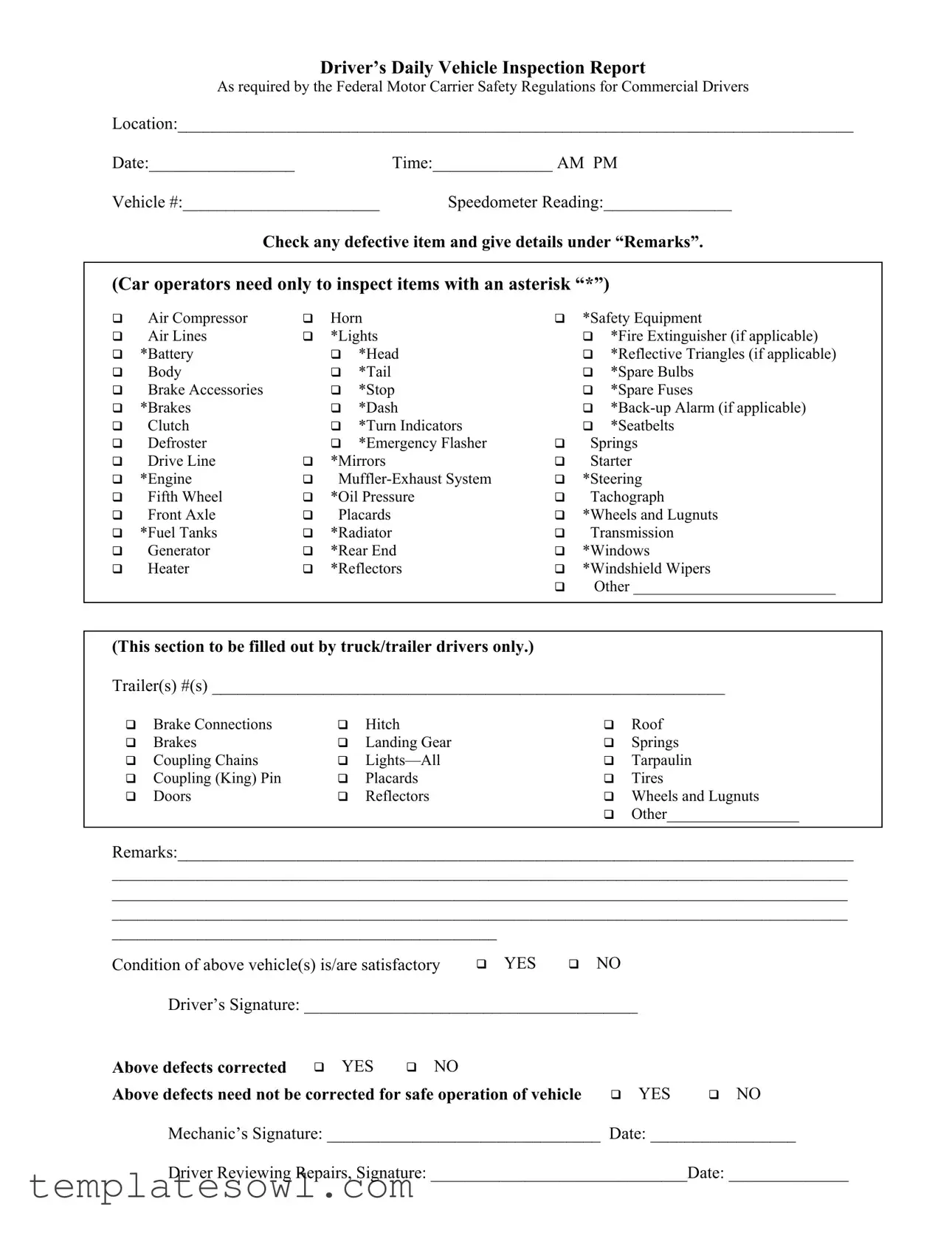What is the purpose of the Driver’s Daily Vehicle Inspection Report?
The Driver’s Daily Vehicle Inspection Report is designed to ensure that commercial vehicles are operating safely. It allows drivers to identify any defects and report them systematically. This practice is essential for compliance with federal safety regulations and for maintaining the vehicle's maintenance schedule.
What items should be inspected on the report?
Drivers should inspect all items marked with an asterisk (*) as well as any additional components they feel are necessary for safe operation. Common checks include lights, brakes, steering, tires, and safety equipment such as reflective triangles and fire extinguishers. A thorough inspection is crucial to ensure that all critical vehicle systems are functioning properly.
How frequently must the inspection report be completed?
The inspection report must be completed daily, or prior to the start of each trip. This frequent reporting helps catch potential issues early, contributing to overall vehicle safety and reliability.
What should a driver do if defects are found during the inspection?
If a driver identifies any defects, they should note these on the report in the “Remarks” section. The driver must then indicate whether the defects can be corrected immediately or if they need to be assessed further by a mechanic. Depending on the severity, some defects may require the vehicle to be taken out of service until repairs are made.
Is the inspection report only applicable to the driver?
No, the report involves collaboration between the driver and a mechanic. After the driver completes the inspection, a mechanic must sign off on any corrections made to the vehicle. This ensures that the report is not only accurate but also that necessary maintenance has been performed.
What happens if the condition of the vehicle is marked as satisfactory?
If the driver marks the vehicle condition as satisfactory on the report, this indicates that all inspected items are functioning properly. It allows for the vehicle to operate safely on the road. However, any noted issues should still be addressed to avoid future problems.
What if the vehicle has defects that do not need correction for safe operation?
If a driver assesses that certain defects do not impact the safe operation of the vehicle, they should indicate this on the report. However, it remains vital to monitor these defects, as they could lead to more significant safety concerns if not addressed in due time.
What is the significance of the driver’s and mechanic’s signatures?
The signatures of both the driver and mechanic on the inspection report serve as an official acknowledgment that the vehicle has been inspected and any defects have been noted. This documentation is important for compliance with federal and state regulations, as well as for the employer’s records.
Can the inspection report be used for future reference?
Yes, the Driver’s Daily Vehicle Inspection Report serves as a historical record of the vehicle’s condition over time. It can be referred to for tracking recurring issues or understanding maintenance needs. Keeping accurate records can play a vital role in ensuring fleet safety and compliance.

